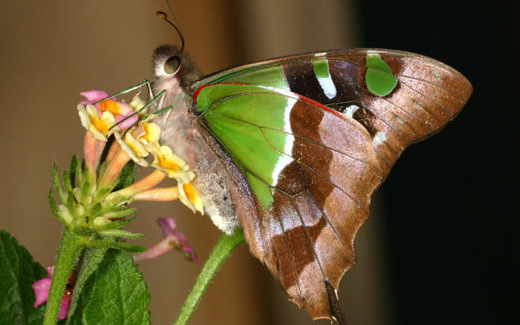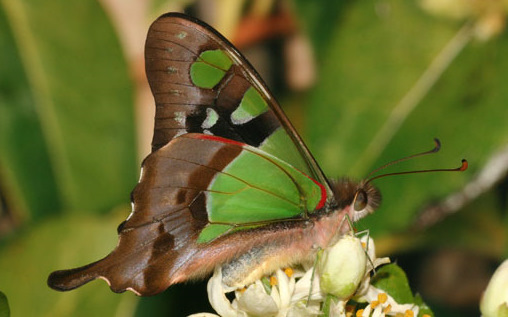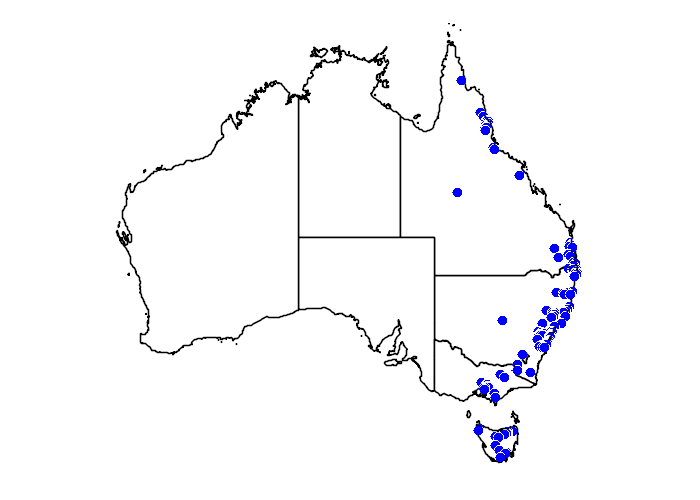Behaviour
Diet
The caterpillar eats leaves from a range of plants including various species of Sassafras, Native Pepper trees, Camphor Laurel, and other plants in the Lauraceae and Rutaceae families. The butterfly feeds on nectar from Lantana plants and various species in the Asteraceae family, which are the daisies.
Movement
The male butterfly defends its territory from rival males and can be seen circling treetops, descending to restlessly sip nectar from flowers.
Flight
It flies during the warmer months and never stops for long. Its wings are always vibrating.
Breeding
Females lay pale green eggs on the young shoots of a food plant. Once the caterpillar has fully grown it forms into a pupa, which is green with yellow lines and is attached to the underside of a food-plant leaf.
Field Guide
Improve your identification skills. Download your Macleays Swallowtail field guide here!





